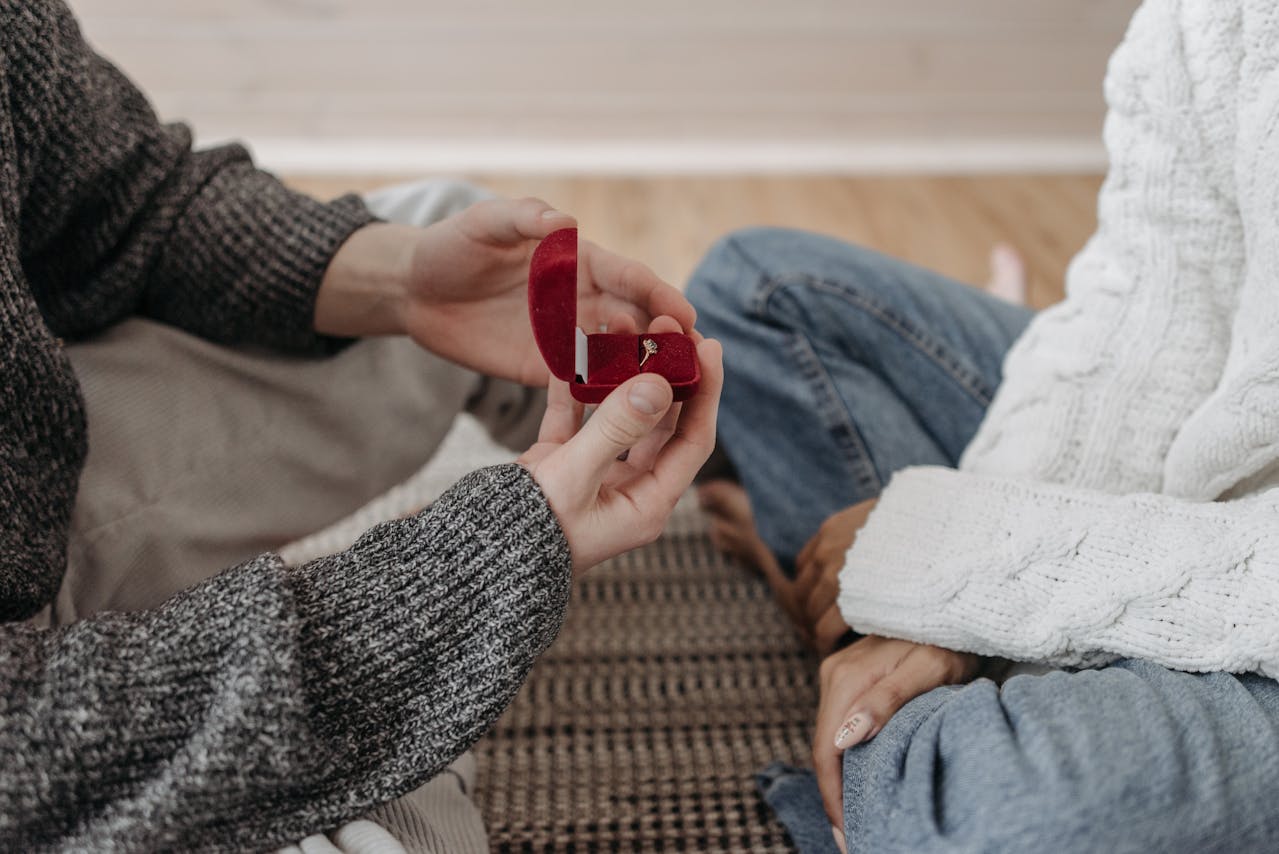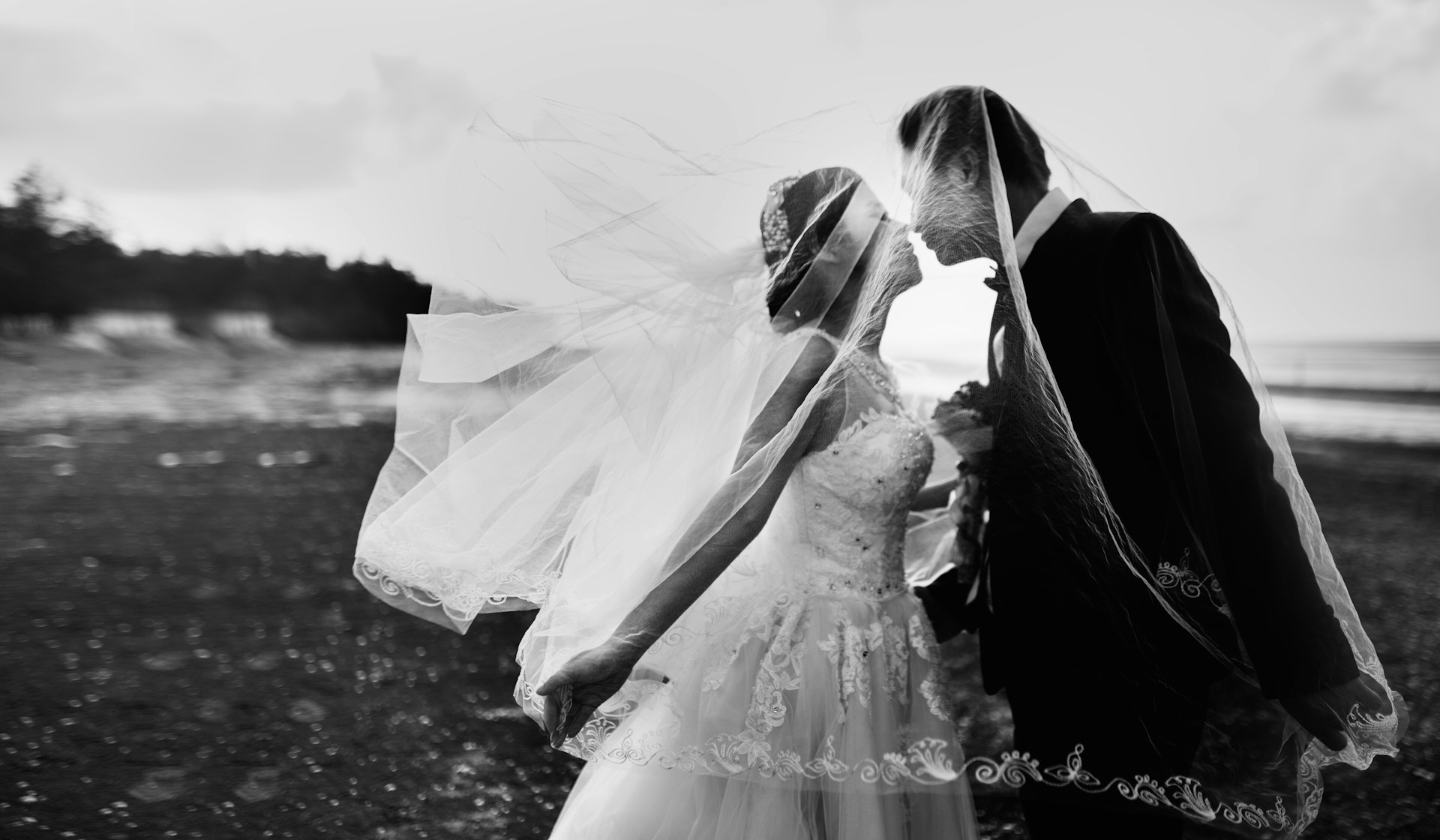


Proof Of Marriage Documents For Immigration
Proof Of Marriage Documents For Immigration
Proof Of Marriage Documents For Immigration
When applying for a marriage-based green card, one of the most crucial aspects of the process is demonstrating that your marriage is legitimate, or bona fide. While providing a marriage certificate is a required step, U.S. Citizenship and Immigration Services (USCIS) needs more than just this document to verify that your marriage is genuine. In fact, many marriage-based green card applications are denied due to insufficient evidence of a true marital relationship.
In this blog post, we will walk you through the key proof of marriage documents you will need to submit with your application and offer tips on how to strengthen your case.
Proof Of Marriage Documents For Immigration
Proving that your marriage is genuine involves more than simply showing you are legally married. USCIS looks for a combination of documents that paint a picture of your life together as a married couple. Below are the most common categories of evidence you’ll need to provide when applying for a green card based on marriage.
1. Financial Proof of a Shared Life
One of the most convincing pieces of evidence you can submit is proof that you and your spouse have combined your financial lives. The following documents can show that your finances are intertwined and that you're building a future together:
Joint Bank Account Statements: Copies of bank statements from accounts that both spouses share.
Property Ownership: Documents such as titles or deeds showing both spouses as co-owners of property.
Mortgage or Loan Agreements: Proof of joint responsibility for mortgage or loan payments.
Joint Insurance Policies: Auto, health, or home insurance policies showing both spouses are listed as covered individuals.
Life insurance: policies that designate each spouse as the primary beneficiary.
These documents help demonstrate that you’ve merged both assets and liabilities, a key factor in proving a bona fide marriage.
2. Proof of Cohabitation (Living Together)
USCIS expects married couples to live together as part of building a life together. If you and your spouse are living at the same address, the following documents can confirm your shared residence:
Joint Lease or Mortgage Agreements: Copies of your lease or mortgage documents that include both partners' names.
Utility Bills: Documents like utility bills or phone bills listing both spouses at the same address.
Driver’s Licenses or IDs: Copies of both spouses' driver’s licenses or IDs showing the same address.
Joint Bank Statements: Additional bank statements that reflect the same address.
In cases where the couple lives separately for valid reasons, such as work or school, it’s essential to provide an explanation. A letter from both spouses explaining the circumstances of living apart, with an indication of when and where they plan to reunite, should be included.
3. Evidence of Children Together
If you have children together, whether from your current or previous relationships, this can significantly strengthen your green card application. Documents that can support this include:
Children’s Birth Certificates: These should list one of the spouses as the parent, proving you are raising children together.
Adoption Records: If applicable, include official adoption records.
School or Medical Records: Records showing the other spouse as the emergency contact or listed in some parental capacity.
Family Photos: Images from family vacations or holidays, showcasing you and your spouse with your children.
4. Other Proof of a Genuine Relationship
Beyond finances and children, USCIS looks for evidence that demonstrates your relationship is more than just a legal arrangement. The following documents can further support your claim:
Travel Records: Flight tickets, hotel bookings, or travel itineraries showing both spouses traveled together, particularly to one spouse's home country.
Communication Records: Emails, text messages, or chat records showing that you regularly communicate.
Photos Together: Pictures from vacations, family events, or major life moments, spread across several years, not just recent photos.
Gifts and Cards: Receipts for gifts purchased for each other, like flowers or jewelry (avoid receipts for everyday items).
Letters or Affidavits from Friends and Family: Statements from loved ones affirming the authenticity of your relationship.
These types of evidence help reinforce the idea that your marriage is real and not just for immigration purposes.
5. Strong vs Weak Evidence of a Real Marriage
Some types of documents hold more weight than others when proving a bona fide marriage. USCIS typically considers the following types of evidence to be stronger or weaker in comparison:
Strong Evidence: Joint bank accounts, life insurance policies, joint leases or mortgages, joint utility bills, and wills.
Medium Evidence: Joint travel itineraries, phone logs, text messages, and photos of the couple.
Weaker Evidence: Cards, affidavits from friends or family, isolated travel tickets, and single event photos.
While weaker evidence doesn’t automatically lead to denial, a strong application generally includes a mix of high-quality proof.
6. The Marriage Green Card Interview: What to Expect
Once you’ve submitted your application and supporting documents, you will likely have to attend an interview with USCIS or at a U.S. Embassy or consulate if you are applying from abroad. During the interview, an officer will ask questions to determine the authenticity of your relationship. Questions could range from how you met to more personal details about your life together.
You should be ready to respond to questions such as:
How did you two meet, and how did your relationship develop?
What is your spouse’s favorite food or color?
What are some of the activities your spouse enjoys in their free time?
Have you experienced any marital challenges? If so, how did you overcome them?
Being prepared for the interview and answering honestly is crucial for a successful outcome.
7. What If You Don’t Have Some Documents?
In some cases, you may not have all the documents listed above. For instance, you may not have joint bank statements or a shared mortgage if one spouse has just arrived in the U.S. In such cases, consider providing alternative evidence, like affidavits from friends or family who can attest to the authenticity of your marriage, or travel documents showing that you have spent time together as a couple.
Conclusion:
Proving that your marriage is genuine is a crucial part of applying for a marriage-based green card. By providing strong evidence such as joint financial documents, proof of cohabitation, photos, and communication records, you can significantly improve the chances of your application being approved. Remember, USCIS is looking for evidence that shows you and your spouse are building a life together, so presenting a variety of supporting documents will strengthen your case.
If you're unsure about the best documents to include for your situation, consider seeking legal assistance to ensure you submit a complete and well-supported application.
FAQs:
1. What if we have separate bank accounts? Will that affect our application?
Having separate accounts isn’t a problem, but it’s recommended to show some joint financial documents, like shared bank accounts or insurance policies, to prove financial integration.
2. What if we haven’t lived together yet?
Living apart isn’t automatically disqualifying, but you must explain why and provide a plan to reunite. A letter detailing the reasons is helpful.
3. What is considered strong proof of a bona fide marriage for a green card?
Strong proof includes joint financial documents, travel plans, photos from various years, affidavits from loved ones, and other evidence showing you and your partner are building a life together.
When applying for a marriage-based green card, one of the most crucial aspects of the process is demonstrating that your marriage is legitimate, or bona fide. While providing a marriage certificate is a required step, U.S. Citizenship and Immigration Services (USCIS) needs more than just this document to verify that your marriage is genuine. In fact, many marriage-based green card applications are denied due to insufficient evidence of a true marital relationship.
In this blog post, we will walk you through the key proof of marriage documents you will need to submit with your application and offer tips on how to strengthen your case.
Proof Of Marriage Documents For Immigration
Proving that your marriage is genuine involves more than simply showing you are legally married. USCIS looks for a combination of documents that paint a picture of your life together as a married couple. Below are the most common categories of evidence you’ll need to provide when applying for a green card based on marriage.
1. Financial Proof of a Shared Life
One of the most convincing pieces of evidence you can submit is proof that you and your spouse have combined your financial lives. The following documents can show that your finances are intertwined and that you're building a future together:
Joint Bank Account Statements: Copies of bank statements from accounts that both spouses share.
Property Ownership: Documents such as titles or deeds showing both spouses as co-owners of property.
Mortgage or Loan Agreements: Proof of joint responsibility for mortgage or loan payments.
Joint Insurance Policies: Auto, health, or home insurance policies showing both spouses are listed as covered individuals.
Life insurance: policies that designate each spouse as the primary beneficiary.
These documents help demonstrate that you’ve merged both assets and liabilities, a key factor in proving a bona fide marriage.
2. Proof of Cohabitation (Living Together)
USCIS expects married couples to live together as part of building a life together. If you and your spouse are living at the same address, the following documents can confirm your shared residence:
Joint Lease or Mortgage Agreements: Copies of your lease or mortgage documents that include both partners' names.
Utility Bills: Documents like utility bills or phone bills listing both spouses at the same address.
Driver’s Licenses or IDs: Copies of both spouses' driver’s licenses or IDs showing the same address.
Joint Bank Statements: Additional bank statements that reflect the same address.
In cases where the couple lives separately for valid reasons, such as work or school, it’s essential to provide an explanation. A letter from both spouses explaining the circumstances of living apart, with an indication of when and where they plan to reunite, should be included.
3. Evidence of Children Together
If you have children together, whether from your current or previous relationships, this can significantly strengthen your green card application. Documents that can support this include:
Children’s Birth Certificates: These should list one of the spouses as the parent, proving you are raising children together.
Adoption Records: If applicable, include official adoption records.
School or Medical Records: Records showing the other spouse as the emergency contact or listed in some parental capacity.
Family Photos: Images from family vacations or holidays, showcasing you and your spouse with your children.
4. Other Proof of a Genuine Relationship
Beyond finances and children, USCIS looks for evidence that demonstrates your relationship is more than just a legal arrangement. The following documents can further support your claim:
Travel Records: Flight tickets, hotel bookings, or travel itineraries showing both spouses traveled together, particularly to one spouse's home country.
Communication Records: Emails, text messages, or chat records showing that you regularly communicate.
Photos Together: Pictures from vacations, family events, or major life moments, spread across several years, not just recent photos.
Gifts and Cards: Receipts for gifts purchased for each other, like flowers or jewelry (avoid receipts for everyday items).
Letters or Affidavits from Friends and Family: Statements from loved ones affirming the authenticity of your relationship.
These types of evidence help reinforce the idea that your marriage is real and not just for immigration purposes.
5. Strong vs Weak Evidence of a Real Marriage
Some types of documents hold more weight than others when proving a bona fide marriage. USCIS typically considers the following types of evidence to be stronger or weaker in comparison:
Strong Evidence: Joint bank accounts, life insurance policies, joint leases or mortgages, joint utility bills, and wills.
Medium Evidence: Joint travel itineraries, phone logs, text messages, and photos of the couple.
Weaker Evidence: Cards, affidavits from friends or family, isolated travel tickets, and single event photos.
While weaker evidence doesn’t automatically lead to denial, a strong application generally includes a mix of high-quality proof.
6. The Marriage Green Card Interview: What to Expect
Once you’ve submitted your application and supporting documents, you will likely have to attend an interview with USCIS or at a U.S. Embassy or consulate if you are applying from abroad. During the interview, an officer will ask questions to determine the authenticity of your relationship. Questions could range from how you met to more personal details about your life together.
You should be ready to respond to questions such as:
How did you two meet, and how did your relationship develop?
What is your spouse’s favorite food or color?
What are some of the activities your spouse enjoys in their free time?
Have you experienced any marital challenges? If so, how did you overcome them?
Being prepared for the interview and answering honestly is crucial for a successful outcome.
7. What If You Don’t Have Some Documents?
In some cases, you may not have all the documents listed above. For instance, you may not have joint bank statements or a shared mortgage if one spouse has just arrived in the U.S. In such cases, consider providing alternative evidence, like affidavits from friends or family who can attest to the authenticity of your marriage, or travel documents showing that you have spent time together as a couple.
Conclusion:
Proving that your marriage is genuine is a crucial part of applying for a marriage-based green card. By providing strong evidence such as joint financial documents, proof of cohabitation, photos, and communication records, you can significantly improve the chances of your application being approved. Remember, USCIS is looking for evidence that shows you and your spouse are building a life together, so presenting a variety of supporting documents will strengthen your case.
If you're unsure about the best documents to include for your situation, consider seeking legal assistance to ensure you submit a complete and well-supported application.
FAQs:
1. What if we have separate bank accounts? Will that affect our application?
Having separate accounts isn’t a problem, but it’s recommended to show some joint financial documents, like shared bank accounts or insurance policies, to prove financial integration.
2. What if we haven’t lived together yet?
Living apart isn’t automatically disqualifying, but you must explain why and provide a plan to reunite. A letter detailing the reasons is helpful.
3. What is considered strong proof of a bona fide marriage for a green card?
Strong proof includes joint financial documents, travel plans, photos from various years, affidavits from loved ones, and other evidence showing you and your partner are building a life together.
When applying for a marriage-based green card, one of the most crucial aspects of the process is demonstrating that your marriage is legitimate, or bona fide. While providing a marriage certificate is a required step, U.S. Citizenship and Immigration Services (USCIS) needs more than just this document to verify that your marriage is genuine. In fact, many marriage-based green card applications are denied due to insufficient evidence of a true marital relationship.
In this blog post, we will walk you through the key proof of marriage documents you will need to submit with your application and offer tips on how to strengthen your case.
Proof Of Marriage Documents For Immigration
Proving that your marriage is genuine involves more than simply showing you are legally married. USCIS looks for a combination of documents that paint a picture of your life together as a married couple. Below are the most common categories of evidence you’ll need to provide when applying for a green card based on marriage.
1. Financial Proof of a Shared Life
One of the most convincing pieces of evidence you can submit is proof that you and your spouse have combined your financial lives. The following documents can show that your finances are intertwined and that you're building a future together:
Joint Bank Account Statements: Copies of bank statements from accounts that both spouses share.
Property Ownership: Documents such as titles or deeds showing both spouses as co-owners of property.
Mortgage or Loan Agreements: Proof of joint responsibility for mortgage or loan payments.
Joint Insurance Policies: Auto, health, or home insurance policies showing both spouses are listed as covered individuals.
Life insurance: policies that designate each spouse as the primary beneficiary.
These documents help demonstrate that you’ve merged both assets and liabilities, a key factor in proving a bona fide marriage.
2. Proof of Cohabitation (Living Together)
USCIS expects married couples to live together as part of building a life together. If you and your spouse are living at the same address, the following documents can confirm your shared residence:
Joint Lease or Mortgage Agreements: Copies of your lease or mortgage documents that include both partners' names.
Utility Bills: Documents like utility bills or phone bills listing both spouses at the same address.
Driver’s Licenses or IDs: Copies of both spouses' driver’s licenses or IDs showing the same address.
Joint Bank Statements: Additional bank statements that reflect the same address.
In cases where the couple lives separately for valid reasons, such as work or school, it’s essential to provide an explanation. A letter from both spouses explaining the circumstances of living apart, with an indication of when and where they plan to reunite, should be included.
3. Evidence of Children Together
If you have children together, whether from your current or previous relationships, this can significantly strengthen your green card application. Documents that can support this include:
Children’s Birth Certificates: These should list one of the spouses as the parent, proving you are raising children together.
Adoption Records: If applicable, include official adoption records.
School or Medical Records: Records showing the other spouse as the emergency contact or listed in some parental capacity.
Family Photos: Images from family vacations or holidays, showcasing you and your spouse with your children.
4. Other Proof of a Genuine Relationship
Beyond finances and children, USCIS looks for evidence that demonstrates your relationship is more than just a legal arrangement. The following documents can further support your claim:
Travel Records: Flight tickets, hotel bookings, or travel itineraries showing both spouses traveled together, particularly to one spouse's home country.
Communication Records: Emails, text messages, or chat records showing that you regularly communicate.
Photos Together: Pictures from vacations, family events, or major life moments, spread across several years, not just recent photos.
Gifts and Cards: Receipts for gifts purchased for each other, like flowers or jewelry (avoid receipts for everyday items).
Letters or Affidavits from Friends and Family: Statements from loved ones affirming the authenticity of your relationship.
These types of evidence help reinforce the idea that your marriage is real and not just for immigration purposes.
5. Strong vs Weak Evidence of a Real Marriage
Some types of documents hold more weight than others when proving a bona fide marriage. USCIS typically considers the following types of evidence to be stronger or weaker in comparison:
Strong Evidence: Joint bank accounts, life insurance policies, joint leases or mortgages, joint utility bills, and wills.
Medium Evidence: Joint travel itineraries, phone logs, text messages, and photos of the couple.
Weaker Evidence: Cards, affidavits from friends or family, isolated travel tickets, and single event photos.
While weaker evidence doesn’t automatically lead to denial, a strong application generally includes a mix of high-quality proof.
6. The Marriage Green Card Interview: What to Expect
Once you’ve submitted your application and supporting documents, you will likely have to attend an interview with USCIS or at a U.S. Embassy or consulate if you are applying from abroad. During the interview, an officer will ask questions to determine the authenticity of your relationship. Questions could range from how you met to more personal details about your life together.
You should be ready to respond to questions such as:
How did you two meet, and how did your relationship develop?
What is your spouse’s favorite food or color?
What are some of the activities your spouse enjoys in their free time?
Have you experienced any marital challenges? If so, how did you overcome them?
Being prepared for the interview and answering honestly is crucial for a successful outcome.
7. What If You Don’t Have Some Documents?
In some cases, you may not have all the documents listed above. For instance, you may not have joint bank statements or a shared mortgage if one spouse has just arrived in the U.S. In such cases, consider providing alternative evidence, like affidavits from friends or family who can attest to the authenticity of your marriage, or travel documents showing that you have spent time together as a couple.
Conclusion:
Proving that your marriage is genuine is a crucial part of applying for a marriage-based green card. By providing strong evidence such as joint financial documents, proof of cohabitation, photos, and communication records, you can significantly improve the chances of your application being approved. Remember, USCIS is looking for evidence that shows you and your spouse are building a life together, so presenting a variety of supporting documents will strengthen your case.
If you're unsure about the best documents to include for your situation, consider seeking legal assistance to ensure you submit a complete and well-supported application.
FAQs:
1. What if we have separate bank accounts? Will that affect our application?
Having separate accounts isn’t a problem, but it’s recommended to show some joint financial documents, like shared bank accounts or insurance policies, to prove financial integration.
2. What if we haven’t lived together yet?
Living apart isn’t automatically disqualifying, but you must explain why and provide a plan to reunite. A letter detailing the reasons is helpful.
3. What is considered strong proof of a bona fide marriage for a green card?
Strong proof includes joint financial documents, travel plans, photos from various years, affidavits from loved ones, and other evidence showing you and your partner are building a life together.
Our experts have compiled resources that cover the basics and beyond.
Related Articles
Related Articles
Related Articles


Checklist For Marriage Based Green Card


Proof Of Marriage Documents For Immigration


Marriage With a DACA Recipient: How to Get a Green Card?


Consular Processing Vs Adjustment Of Status


How to Marry a Non-U.S. Citizen?: A Detailed Guide


How Do You Provide Proof Of Domicile For Green Card Applications?


H1-B Marriage to US Citizen: A Step-by-Step Guide


How to Change B-1 / B-2 Visa to a Green Card?


K1 vs CR1 Visa - Which One Do You Need?


How To Get A Green Card For My Parents?


K1 Visa Lawyer Cost: Complete Price Breakdown Guide 2025


K1 Visa vs K3 Visa: Key Differences & Better Options (2025)


How to Bring Your Parents to the U.S. – A Complete Immigration Guide


Your Guide to the Fiancé Visa Process: Bringing Your Loved One to the U.S.


How to Prepare for K-1 Visa Interview? - Common Questions & Tips


Maximizing Your K-1 Visa Approval Chances: Essential Tips


Transitioning from a K-1 Visa to a Marriage-Based Green Card: A Step-by-Step Guide


Understanding the Role of a K-1 Joint Sponsor


Form I-129F: The First Step to Getting Your K-1 Visa


Can I Visit My Fiancé in the United States Without a K-1 Visa?


Tracking the Progress of Your K-1 Visa Application


How to Ace Your K-1 Fiancé Visa Interview


K-1 Visa Cost - How Much Does a Fiancé Visa Cost in 2025?


K-1 Visa Timeline - How Long Does it Take to Get a K-1 Fiancé Visa?


Fiancé Visa vs. Marriage Green Card - Know the Difference


The Perks of Having a K-1 Visa


Essential Documents for Your Fiancé Visa Application


K-1 Visa Application: Know Your Requirements


Should You Apply for Work and Travel Permits During the Green Card Process?


Becoming a U.S. Citizen: A Step-by-Step Guide for Immigrants


Navigating CR1 and IR1 Spouse Visas: A Simple Guide


Your Guide to U.S. Immigration: Simplified


The Ultimate Guide to Marriage Green Cards: Your Pathway to Permanent Residency


Your Guide to Family Immigration: Navigating the Pathway to Reunite with Loved Ones


Everything You Need to Know About the K-1 Visa: A Comprehensive Guide


Top 5 Questions to Ask an Immigration Lawyer


The Role of a Family Immigration Lawyer: How We Can Help


Family Immigration 101: Common Questions Answered


A Comprehensive Guide to Common Immigration Forms and Fees


Navigating the Immigration Process: A Comprehensive Guide to Family Immigration


A Comprehensive Guide to Different Types of Family Immigration Visas


Immigration Law FAQs: Answers to Your Most Common Questions

Welcome to the Namona Family!
We're committed to guiding you through every aspect of your immigration journey,
ensuring a smooth and stress-free process.
Call us today and take the first step towards achieving your immigration goals.
© 2024 Namona

Welcome to the Namona Family!
We're committed to guiding you through every aspect of your immigration journey,
ensuring a smooth and stress-free process.
Call us today and take the first step towards achieving your immigration goals.
© 2024 Namona

Welcome to the Namona Family!
We're committed to guiding you through every aspect of your immigration journey,
ensuring a smooth and stress-free process.
Call us today and take the first step towards achieving your immigration goals.
© 2024 Namona